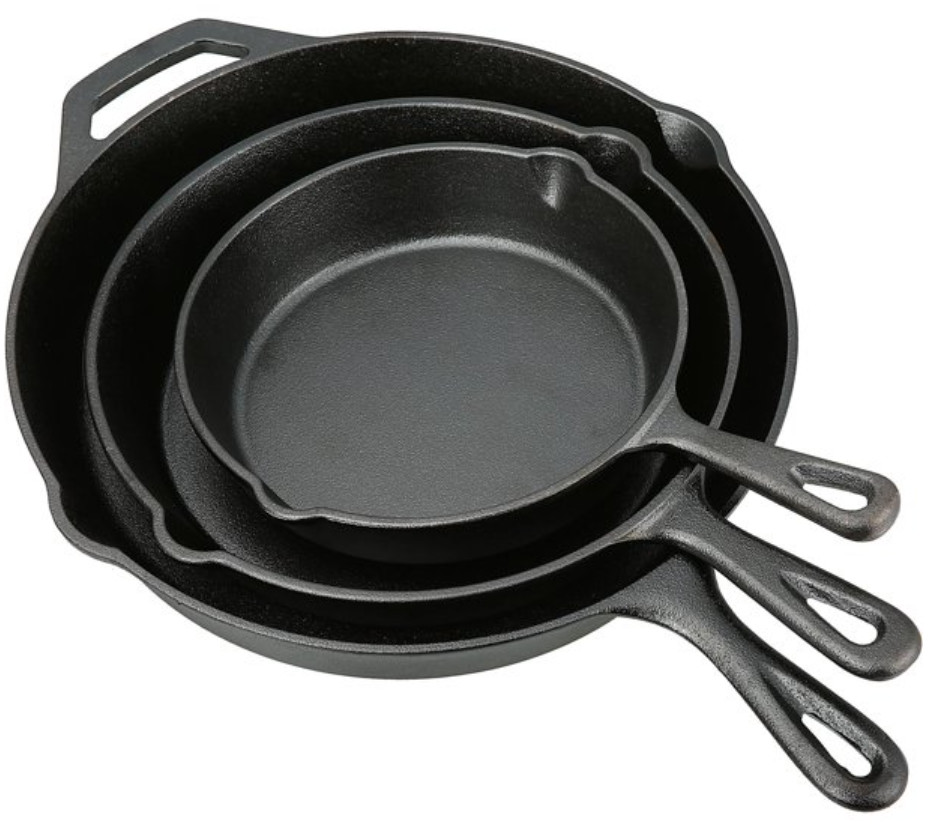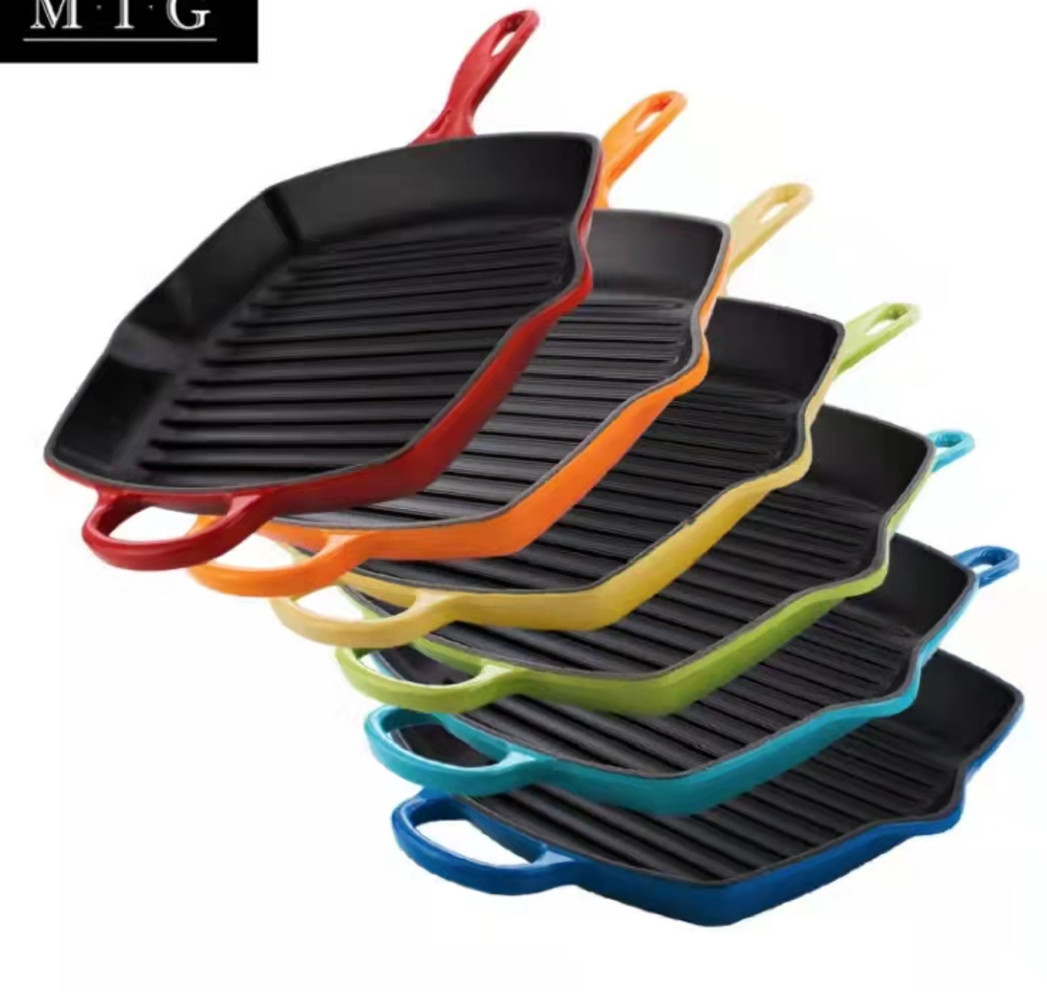- 150m gu deas, Rathad West DingWei, Baile Nanlou, Baile Changan, Sgìre GaoCheng, Shijiazhuang, Hebei, Sìona
- monica@foundryasia.com
Ògmh . 12, 2023 18:48 Air ais dhan liosta
DÈ TH' ANN AN CAST IRON COOKWARE
Dè a th 'ann am bathar-bog iarann teilgte:
Is e bathar-bog iarann teilgte a th’ ann am bathar còcaireachd trom-dhleastanas a tha air a dhèanamh le iarann teilgte airson a bhith a ’gleidheadh teas, seasmhachd, comas a bhith air a chleachdadh aig teòthachd fìor àrd, agus còcaireachd neo-mhaide nuair a tha e air a ràitheadh gu ceart.
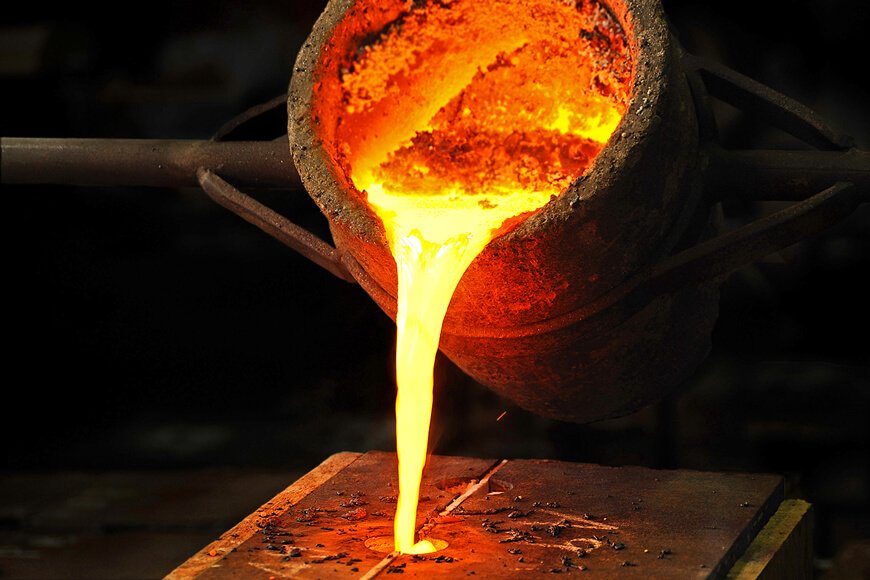
Eachdraidh bathar-bog iarann teilgte
In Asia, particularly China, India, Korea and Japan, there is a long history of cooking with cast iron vessels. The first mention of a cast-iron kettle in English appeared in 679 or 680, though this wasn't the first use of metal vessels for cooking. The term pot came into use in 1180. Both terms referred to a vessel capable of withstanding the direct heat of a fire. Cast-iron cauldrons and cooking pots were valued as kitchen items for their durability and their ability to retain heat evenly, thus improving the quality of cooked meals.
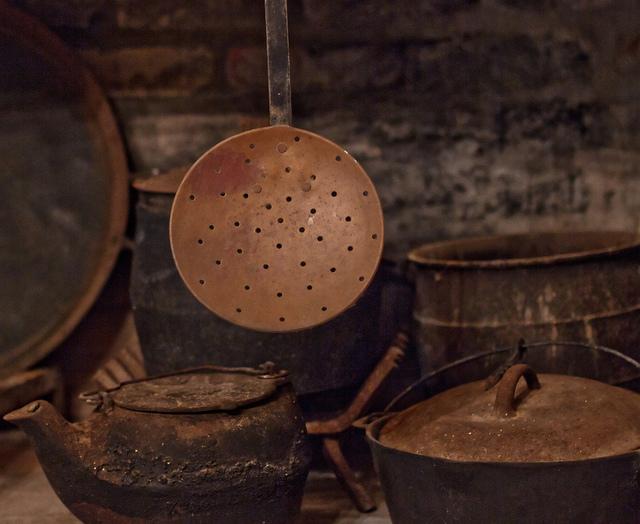
Anns an Roinn Eòrpa agus na Stàitean Aonaichte, mus deach an stòbha cidsin a thoirt a-steach ann am meadhan an 19mh linn, bha biadh air a bhruich anns an teallach, agus bha poitean is panaichean còcaireachd air an dealbhadh airson an cleachdadh san teallach, no airson a bhith crochte na bhroinn.
Cast-iron pots were made with handles to allow them to be hung over a fire, or with legs so that they could stand in the coals. In addition to Dutch ovens with three or four feet, which Abraham Darby I secured a patent in 1708 to produce, a commonly used cast-iron cooking pan called a spider had a handle and three legs allowing it to stand upright over campfires as well as in the coals and ashes of a fireplace.
Thàinig poitean còcaireachd is panaichean le bonn còmhnard gun chas gu feum nuair a dh’ fhàs mòr-chòrdte air stòbhaichean còcaireachd; Anns an ùine seo de dheireadh an 19mh linn chaidh am flat a thoirt a-steach
cast-iron skillet.
Bha bathar-bog iarann teilgte gu sònraichte mòr-chòrdte am measg luchd-dèanamh dachaigh sa chiad leth den 20mh linn. B’ e bathar-bog saor, ach seasmhach a bh’ ann. Bha co-dhiù aon phana còcaireachd le iarann teinnteach aig a’ mhòr-chuid de dhachaighean Ameireagaidh.
Anns an 20mh linn cuideachd chaidh bathar-bog còcaireachd le còmhdach cruan a thoirt a-steach agus a chleachdadh.
Today, of the large selection of cookware that can be purchased from kitchen suppliers, cast iron comprises only a small fraction. However, the durability and reliability of cast iron as a cooking tool has ensured its survival. Cast-iron pots and pans from the 19th and 20th century continue to see daily use to the present day. They are also highly sought after by antique collectors and dealers. Cast iron has also seen a resurgence of its popularity in specialty markets. Through cooking shows, celebrity chefs have brought renewed attention to traditional cooking methods, especially the use of cast iron.
Bathar riatanach
Tha seòrsaichean de bhathar-bog iarann teinnteach a’ toirt a-steach panaichean friogais, àmhainnean Duitseach, griddles, iarann waffles, preas panini, friogairean domhainn, woks, fondu agus potjies.
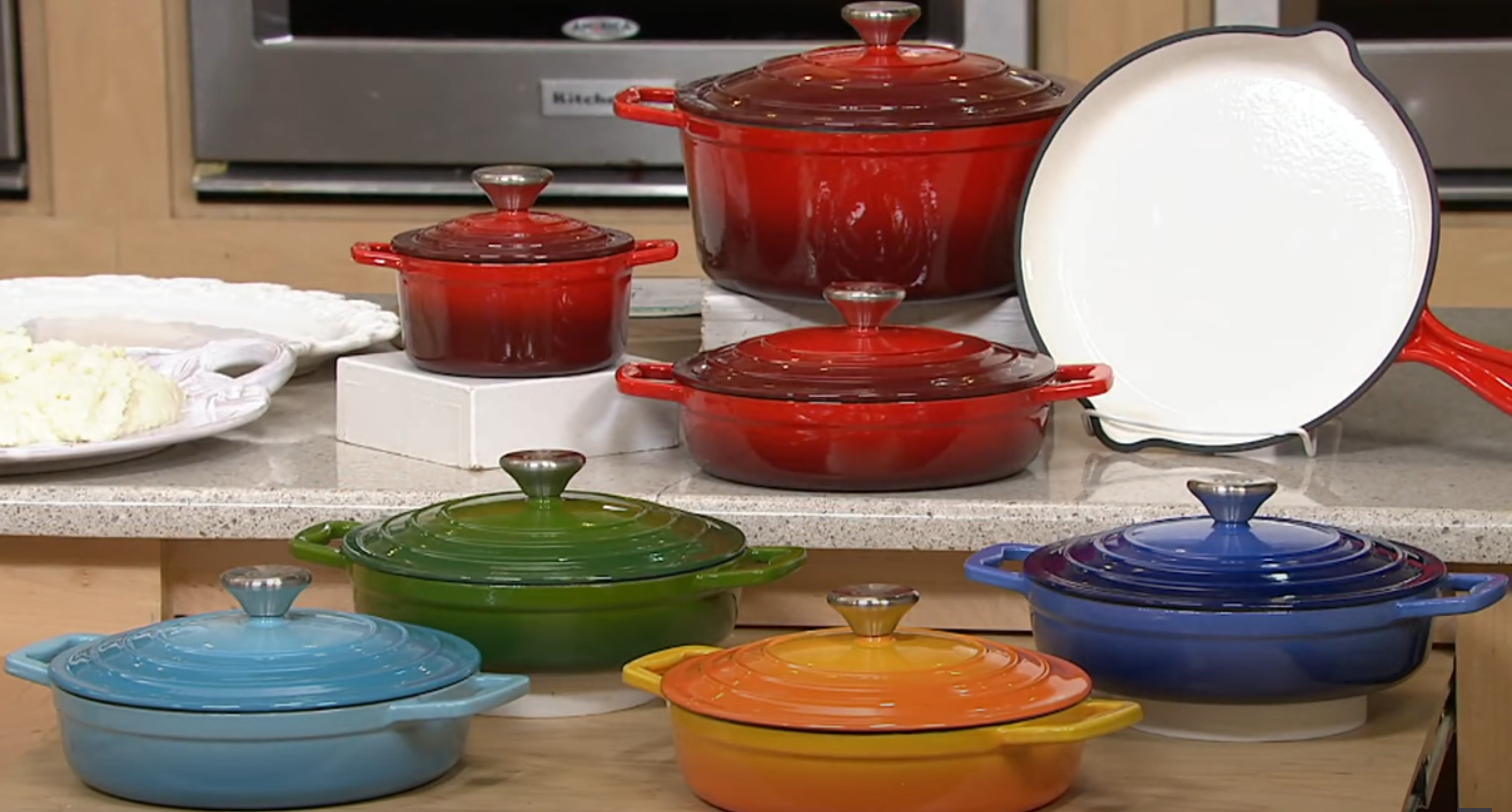
Buannachdan bathar-bog iarann teilgte
Cast iron's ability to withstand and maintain very high cooking temperatures makes it a common choice for searing or frying, and its excellent heat retention makes it a good option for long-cooking stews or braised dishes.
Because cast-iron skillets can develop a "non-stick" surface when cared for properly, they are excellent for frying potatoes or preparing stir-fries. Some cooks consider cast iron a good choice for egg dishes, while others feel the iron adds an off-flavor to eggs. Other uses of cast-iron pans include baking, for instance for making cornbread, cobblers and cakes.
Many recipes call for the use of a cast-iron skillet or pot, especially so that the dish can be initially seared or fried on the stovetop then transferred into the oven, pan and all, to finish baking. Likewise, cast-iron skillets can double as baking dishes. This differs from many other cooking pots, which have varying components that may be damaged by the excessive temperatures of 400 °F (204 °C) or more.
-
Product introduction of Changan Cast Iron Co., LTD
NaidheachdanJan.24,2024
-
The Impact of the Leidenfrost Effect on Non-Stick Properties of Cast Iron Titanium Coated Cookware
NaidheachdanJan.24,2024
-
A’ sgrùdadh na roinne còcaireachd—— Casseroles Iarainn Tilgte vs Casseroles Cunbhalach
NaidheachdanFaoilleach 03, 2024
-
Bùth-obrach pacaidh air ath-eagrachadh le sgeilpichean agus stòradh 3D airson bathar
NaidheachdanDùbhlachd 29, 2023
-
Faodar poit cruan iarann teilgte a ghlanadh gu h-èifeachdach leis na ceumannan a leanas:
NaidheachdanDùbhlachd 27, 2023
-
Structar metallographic airson cruan air iarann teilgte
NaidheachdanDùbhlachd 27, 2023
